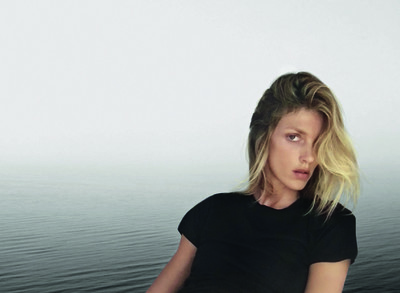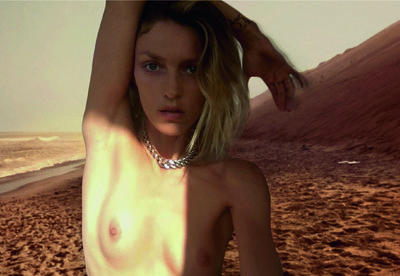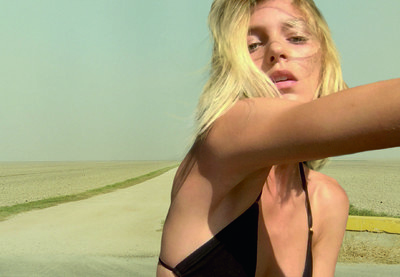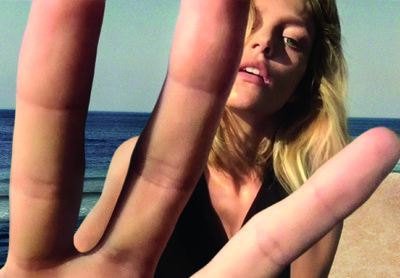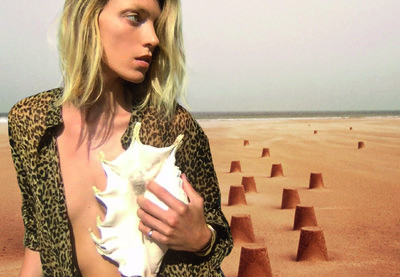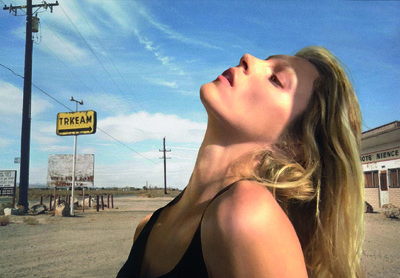In early April, we sent the following request to 17 leading art directors working in the fashion industry.
We’d love for you to conceptualize and deliver a fashion portfolio with your available means and from your current location. You would be entirely free to work with any partners, and to select any brand(s) you would like to feature in the portfolio. The exercise is one that innately addresses the current restrictions on collaborative work.
Just prior to sending out that message, we had asked ourselves a question that remains as bewildering today as it was when fashion’s capitals were first entering lockdown: in a world of Covid-19 restrictions, how can you create fashion imagery that often requires in-person collaboration, international travel, shipping clothes, and an often significant budget?
We decided to let the industry’s art directors work that question out for us. In doing so, commissioning a collective body of work that feels both adapted to this uniquely curious moment and which acts as a mirror to its creators. Each of the portfolios presented over the following pages reveals the personality, idiosyncrasies, background, working processes, address book, and creative impulses of the participating art director(s).
Interview by Thomas Lenthal
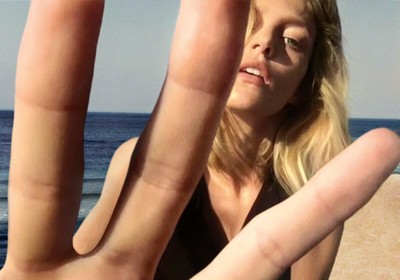
In early April, we sent the following request to 17 leading art directors working in the fashion industry.
We’d love for you to conceptualize and deliver a fashion portfolio with your available means and from your current location. You would be entirely free to work with any partners, and to select any brand(s) you would like to feature in the portfolio. The exercise is one that innately addresses the current restrictions on collaborative work.
Just prior to sending out that message, we had asked ourselves a question that remains as bewildering today as it was when fashion’s capitals were first entering lockdown: in a world of Covid-19 restrictions, how can you create fashion imagery that often requires in-person collaboration, international travel, shipping clothes, and an often significant budget?
We decided to let the industry’s art directors work that question out for us. In doing so, commissioning a collective body of work that feels both adapted to this uniquely curious moment and which acts as a mirror to its creators. Each of the portfolios presented over the following pages reveals the personality, idiosyncrasies, background, working processes, address book, and creative impulses of the participating art director(s).
‘I don’t have the pretence of
saying that I am an artist.’
A conversation with Ezra Petronio,
29 April 2020.
Thomas Lenthal: You were the first to turn your work in! So let’s start by talking about it. Can you give me some context?
Ezra Petronio: The first time I saw this whole idea of shooting from distance was with my daughter who’s 15, who was doing these really beautiful portraits of friends via FaceTime. They were genuine and real; it was not about playing with the medium – it was truthful. Then we all started doing things like that, I actually did a Zara still-life shoot that way. So I thought maybe we could try and push it one step further and do something with a great model – Anja Rubik, who I’ve worked with since she started – and then play with and celebrate this idea of virtual images. Then there’s the idea of our future communications being on Zoom, with its virtual backgrounds, so I was like, let’s embrace the fakeness of it, but let’s try and conceptualize it and try to pay homage to all those great photographers who spend days and days photographing the beautiful landscapes we’re all dreaming about right now. It was fun to spend hours on the Internet trying to find, like Gursky, all these great people who spend hours working with their large-format cameras. Then Anja is such a professional model; she is so good. She was outside and played with the sunlight to give it more volume. It’s totally virtual. It’s not the most original idea, but it is something about the now and these virtual landscapes. The credits say screen captures, not photography, because it is meant to be what it is: purely a gimmick. I wanted to see how within a gimmick we could do something inspiring. And it was fun to see Anja work. I was photographing the screen, but she was also doing screen shots. It was all really fun.
Thomas: All in one go, you’ve answered every single question of the first chapter! So another question, about your portfolio, as well as more generally, confinement is just one of the restrictions right now, but can restrictions be useful or even necessary for creative work?
Ezra: Restrictions can be really good. They can narrow down a brief and channel different ideas, and enable you to even be more creative. I remember working for Comme des Garçons a long time ago with a limited budget; we had no choice but to really embrace that and come up with great ideas. It’s the same when we do our magazines; we have limits. Restraints are always quite stimulating. Just look at other media, like beautiful music videos by Michel Gondry or Spike Jonze when they had small budgets yet came up with something amazingly creative. Speaking more particularly about today and the whole idea of confinement, I think it’s all about the now, about having to produce content, exist online – and create noise. We’re going to see a lot of gimmicks and tricks over the next couple of months, and there will be a limitation to what can be done. If we talk about fashion imagery, there is really a difference between good creative content and creating strong fashion imagery. As creative directors, we are there to filter and to come up with great new ideas whether that’s for digital channels or other media. For a brand, regardless of the medium, the imagery has to be strong, timeless and emotional.
Thomas: You are anticipating my questions! So what in your eyes constitutes a good image and has this remained the same throughout your career? And then, how do you achieve this?
Ezra: A good image is something that captures emotions definitively. For me, a strong image is timeless. When we look at our references, as creative directors, when we are creating mood boards for campaigns, what do we put in there? We put in images, fashion images that have stood the test of time, regardless of the period; it could be Avedon or Juergen [Teller]. That’s what an image should be. Some people can do that with a GIF and fair enough, but I don’t think in confinement it is going to be that easy. These fashion images are a collective effort, so we will see when we can go back to that. Doing this project reminded me of a Hans Feurer shoot. He would shoot with a long lens 50 metres away from the model, but it felt like there was no distance. So I think we as creative directors will need to help brands occupy this space and create good-quality content. Once again, good ideas should stay good ideas whatever the medium, whether it is a stupid three-second Insta story or an image that will live on a billboard, so it is up to us to maintain our high standards. A good image needs emotion and it needs time.
‘The whole inception of Self Service came from high school. Before it even took a magazine format, it was this idea of defending youthful dreams and ideas.’
Thomas: For you the definition of a good image is that it’s timeless. Has that always been your definition?
Ezra: When I start doing something, I never think, ‘Oh I want this to be timeless.’ I work on intuition and instinct. What has always been exciting is relying on intuition, and sometimes it’s nice to work fast. There’s nothing wrong with that – but it is easier to work fast when you have experience. I’m concerned for younger people who have to produce really quickly without having those filters and that experience, even if sometimes, intuition and the moment can provoke some amazing things. Times are changing; I am not a nostalgic person saying we have to shoot in a certain way. I don’t mind doing shoots and content campaigns in different contexts; it just becomes a little more complex and you have to be a bit more present. When we shoot a campaign, we have 70 people on set one day to produce eight pictures, three films, and backstage videos. More than ever that is when people like us, creative directors, have to excel in what we do because we really have to be on top of all that and make sure that everything being produced corresponds with our taste level and what we think is right for the brand. It can sometimes be really tiring, but it is also so gratifying to see and to experience.
Thomas: Let’s go back to your teenage years. Was there a defining image or reference or person from that time that became instrumental in you working in fashion and art direction?
Ezra: I grew up in a really creative environment. My mom was a dancer and my father was a creative director, so I was always exposed to photographers and stylists and shoots. I wasn’t necessarily into that, but I was really into photography. If there was one defining moment, it would be my last high school year when my love of magazines was triggered. It was about 1986 and I was at Lycée Montaigne in Paris. There were all these demonstrations, it was really political, and I had some friends who were more liberal than me and others who were more conservative, and I wanted to find a sort of medium. So I started a school newspaper; obviously there was zero funding so we went out and tried to get the financing ourselves. We went to a cookie store and they took an ad; this religious store and they took an ad, too. I got all my friends involved and we did interviews like journalists and I had them writing reviews. Then we Xeroxed it. That was when I realized that the idea of a magazine could mean a lot to people, that it was a great opportunity to express what people around you were thinking. So if there is something I go back to, it’s that. I still have the issue!
Thomas: Was there a specific image that you remember being in awe of? Something that stayed in the back of your mind and became like a nucleus of your vision?
Ezra: I was extremely inspired by street style and styles in music. You’re going to laugh, but I loved Imagination, an old funk band, and I’d wear a bandana and go to La Scala. I was also a mod at one point and Quadrophenia marked me a lot, that whole mod aesthetic, the skinhead aesthetic. It was more music-related imagery that touched me most; it expressed an extension of who you were and the dreams that you had.
Thomas: What is most intuitive and what do you overthink in your work?
Ezra: Unfortunately, it’s a combination of both intuition and overthinking I always allow myself to express what I’m thinking, whether to people around me or to myself. I let things flow, any image, any idea that comes to mind. I don’t self-censor; I don’t fear sounding stupid to myself, so it’s important to be totally free and to follow your intuitive ideas, even if they don’t seem to mean anything, even if you haven’t conceptualized or formalized them. It could be something that touched you in a movie, on TV or a graphic on the street. Then you keep all those ideas and store them in your mind or digitally so you can let them flow out when the time is right. It’s like, you take a snapshot of some typography in the street, and then two years later you realize it’s the exact same font you just used on a fragrance bottle. It might sound silly, but it works like that. It’s really important to let intuition flow. I don’t stop there, though. Then I have to go over it. It’s still not overthinking, but more a second school of thought that I learned from people I’ve worked with, like my 10 years with Miuccia Prada. It’s a process that involves thinking and questioning what you’re doing. The work evolves even if you know it is never going to be perfect. Then, at some point, you have to say stop. It’s a mix of putting out things that are still raw or still evolving and stuff that’s been really overthought and developed. I am so grateful to do something that I really live and love, but if you’re passionate about what you do, you think about it all the time. So you can wake up in the middle of the night, not every night, but sometimes you’re like, ‘Oh shit, that’s it!’ I have thousands of notebooks of unfinished ideas and thoughts and scribbles that mean nothing. Sometimes you have all those things in your mind, and you wait a day and then they will come out of your mind in a beautifully coherent way, and you sketch it. That is when it is quite beautiful, you know. Back to you, am I a tortured person, doctor? [Laughs]
‘Good ideas should stay good ideas, whether it’s a stupid three-second Insta story or a billboard image, so it’s up to us to maintain high standards.’
Thomas: I think it is very healthy; you sound fine to me!
Ezra: There are also different contexts in which we work. There are extremely personal contexts, like the magazines we do, where we are both client and creative at the same time and where we can really explore, and then there is our role as creative directors working for brands. I make a clear distinction. I don’t have the pretence of saying that I am an artist and I am just going to put my mark on a brand. We are creative people, but what is a creative director if not someone who encapsulates and packages and reveals what the client’s message is? And that is what we do with these people, taking the essence of the brief and conceptualizing it, then developing it through a whole series of tools. And there is a certain artistry to that, you know.
Thomas: As a teenager, or even as child, were you always trying to be different and individual, and how do you strive to be different today? Is it a mind set or a method?
Ezra: It’s very personal to me. My parents were American, but they moved to Paris and so I grew up there, in a place where we were outsiders. We never really belonged there. We’re not French, but we were living in Paris; my name was different. There are a lot of things as a young person that make you aware of not fully belonging to the context you are in. Once again, I was also very fortunate; my parents were into music, we had a lot of influences, both cultural and religious, around us. It was a very healthy environment, so I think that, naturally, my parents were also self-made people. My father opened his own company, my mother opened her own dance studio, and we were left to take control of what our lives were about. We went to school, but I was always the one wanting to start a band. I really loved creating things, like the magazine; it was always about that. The whole inception of Self Service came from high school. Before it even took a magazine format, it was this idea of gathering together different creative worlds and defending that. I always had this idea of defending youthful dreams and ideas. In that sense, this idea of entrepreneurship, it pushes you to be a bit different and to break from the norm.
Thomas: It becomes second nature after a while. In an ideal scenario, do you want your work to appeal to a more niche demographic or are you aiming at a wider audience?
Ezra: That evolves with our careers. The early days are all about exploring and building your credibility and your experience in the field you choose and so you go through the steps of trying things. Quite soon, fashion became one of the main industries we were working in and I am so lucky to have done that for years and years. I am not interested in self-promotion, because working with mentors like Prada and Comme des Garçons, and Lagerfeld, all these different designers, feeds me. Once you have mastered your craft, you always try to surprise yourself. Working for a niche is one thing, but then why shouldn’t something mass market be as emotionally appealing as something niche? If you can do a great Balenciaga or Chloé ad, why can’t you do a great one for Zara or Apple? When I was art director at Chanel and working with all the different divisions – fragrance, beauty, skincare, watches – I remembergetting a brief to work on Allure [fragrance] as it was losing market share to Dior. They basically said you can reinvent anything you want. So I said, ‘Wait a minute, you have a boat, you have an actor, we don’t need to reinvent. Why don’t we just take those same ingredients and find a way to rework it in a beautiful way?’ We did it with Bruce Weber and made something super strong that appealed to both the niche and the mass market. It’s even more beautiful if you are able to bring that level of quality to work with brands and help them to achieve a level of creative excellence that answers the brief, sells the product, and touches people. Today I’m more interested in that, because I have done more niche things, and I prefer a challenge.
‘Rei Kawakubo would ask us where the rest of our presentation was and we’d say, ‘In the garbage can!’ She’d say, ‘Well, go get the garbage can!’’
Thomas: It’s an American quality, bringing class to the masses; the best example was the golden age of Hollywood when they created amazingly sophisticated works of art that appealed to everyone, whether they were a college professor or a janitor. That feels very American. The British did it to a certain extent by coming up with their version of pop. The French are not that gifted in that; for them, culture is high or low and you can’t bring high to low. Whereas the Americans were amazing at that and so were the British, and that is why we were always very impressed with what comes out of the Anglo-Saxon world in terms of pop culture.
Ezra: I think you’re right.
Thomas: Which person in the fashion industry do you most admire and why?
Ezra: The people who really come to mind are those who influenced the way I work. I had a teacher at Parsons called Henry Wolf, an old timer who’d worked at Harper’s Bazaar with Alexey Brodovitch. That was an era when an art director could use all kinds of media, and Wolf taught us how to think visually and globally, using typography, picking up a camera and not being afraid to use it, using film titles. It was really, really interesting and taught me a lot. It didn’t pigeonhole me and taught me that if you are a creative person then everything is possible; you just have to search all over the place and master all these crafts as best as possible. He really taught me what the job of an art director was: it’s not just someone who comes up with great concepts, it is someone who has all this culture. Then there were two other people, my first clients: Rei Kawakubo was an amazing mentor in the sense that she really taught us the art of detail, to an obsessive extent. I remember doing an invitation for a show and we were working with Adrian [Joffe, Comme des Garçons president] in Paris and we sent the finished invitation by fax to Tokyo and we got a fax back at four in the morning and she’d scribbled all over the thing with comments, like the RSVP is too small, make it one point larger. And
I was like, what the hell? She always really pushed us. For our presentations, she’d ask us where the rest of it was and we’d say, ‘In the garbage can!’ So she’d say, ‘Well, go get the garbage can!’ She wanted to see the process. My second mentor was Miuccia Prada, who you’ve worked with, too. She was absolutely fundamental in teaching me how to question and never to be satisfied, and to explore and try things, but also to know when to stop. That was absolutely stunning. She’d say, ‘This part is good, we don’t need to go further, but this needs to go further.’ It was this idea of process. We’re fortunate to work with people like that. It helps us and it shapes the way we are.
Thomas: What does success look like for you?
Ezra: Happiness, I would say. Professionally speaking, success is also reaching a certain point in the work you have produced that you don’t feel you need to prove anything any more. We are always very emotional people, so the grass is always greener elsewhere and you never think you have enough. Also, we are in an industry where we are constantly judged; you know, a season goes by and if you haven’t produced a great campaign, you are out of the system! When you reach a level where you have really accomplished something and you feel that you could stop and you’d be very proud of everything you’ve done – that is absolute freedom. Because everything else that comes after that is a bonus, another great challenge and opportunity. That is success for me, reaching that moment when you don’t have the pressure – not in financial terms or the everyday reality of running a business – but the pressure of having to prove you have something to say.
Thomas: Describe a professional disappointment and what it taught you.
Ezra: It’s disappointing when you can’t convince a brand or designer that your idea was better than another. Or worse than that, you are faced with certain clients or certain companies that tend to overthink. I remember a big mass-market fragrance, and after a lot of time and thought, we sold them a concept for a film. The designer was crying, saying, ‘You have encapsulated everything that it means to me!’ It was a moment of euphoria! Then we went through the spinner and spent a year doing 27 client presentations – 27 presentations! After all that we ended up with something ridiculous, and everyone was unsatisfied. That was annoying and it happens sometimes. Disappointment is more when you are misunderstood, when you are working on a projects for a certain brand or company that has hired you for what it sees is great in you, but then absolutely doesn’t trust you to do that thing for them. That is really stupid; it’s a waste of time and money and everyone is unsatisfied. That is the biggest disappointment; it’s happened to all of us, I guess.
‘Looking back at those pre-confinement days, you’d spend 12 hours in the office and of those 12 hours, how many were actually spent on the work?’
Thomas: When things return to some level of normality, will your impulse be to explore notions of fantasy and escapism or will you be more inclined to double down on realism and document the moment?
Ezra: What is going to happen, I think, is there will be a lot of marketing and there will be consensus around certain values because the fashion industry needs to feel good about itself. They’re going to try and create a certain sense of good conscience to connect again with consumers. So there will be all these positive message, like, let’s bring the goodness, kindness, hope and optimism, and all that. This is going to be pure marketing, so our job is going to be to bring strong creative work to that, whether it is graphics or photography. In my opinion, it’s going to be about the reality, because it has changed. But I don’t think fundamentally that I will shoot a campaign differently in September than I might have done before. The process might be different, though; maybe it will be less contrived. Perhaps it will be more about brand image and brand statements and less product driven; there might be things like that that are interesting. But I don’t think it will influence me that much.
Thomas: Are you itching to get back to the pre-Covid process?
Ezra: Actually, one thing I’ve really appreciated, on a daily basis, is the luxury of time and stripping away all the unnecessary stuff from my daily work life. I think I am able to work way better with things being a bit more filtered. Not that I want to work at a distance from my team, but looking back at those pre-confinement days, you’d be spending 12 hours in the office and out of those 12 hours, how many were actually spent on the work? There were so many unnecessary phone calls and meetings. I’m speaking for creative directors now, as we have more control over the processes than CEOs and marketing people, but for us, we are able to work better and find more time to be more efficient and more creative. It’s more enjoyable and that is something that I look forward to keeping on after this is over. I’m actually being extremely productive; I am achieving in a day what used to take three days because there are no distractions. I am looking forward to continuing that kind of control over my environment and time.
Thomas: Lastly, and this is a big question, do you think it is possible to be unique today?
Ezra: This is a financially extreme crisis and the luxury industry, which we all work with, has such huge capital and is so dependent on the economy. That is the way our world is set up, so it’s going to hit us right in the face. Yes, we are going to be hit, so more than ever we have to try as much as possible to create meaningful support systems for the new generations coming into the industry. It also depends on your age. We are older, we have much more to lose, so we might be more terrified, but if I were younger today, I would see this as an opportunity to be true to myself. Maybe we are going to get our asses whipped by new generations, who are going to want to do this in a whole new way. We have to question how we operate and how we see the next 10 years of our creative lives. Maybe it is time to change things, but for me, it is absolutely about being unique. If you get desperate about it, you are going to get swept away. But then, even being unique you might crash.
Thomas: You will crash beautifully.
Ezra: For us magazines, things are going to be extremely difficult. So, yes, let’s crash beautifully.
